March 30, 2021
Reading Time: 5 minutes
by Nicole Tucker
I grew up in Newark, NJ, and attended University High School. While at University High, I learned of ACT-SO and competed first in Poetry and Computer Science in 1992. I placed in these categories at the state level but not nationally. The second-year I thought about the Architecture category as I was considering it as a career. 1993 would have been my Sophomore year and I would have been 15 at that time. My Dad grew up with William M. Brown, III, FAIA, NOMA, (I believe their parents attended the same Church) and approached him about being a mentor for me which Bill/Mr. Brown said yes.
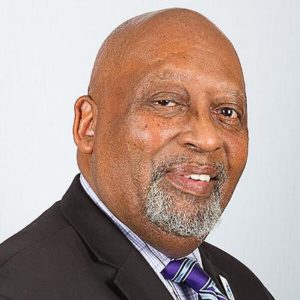
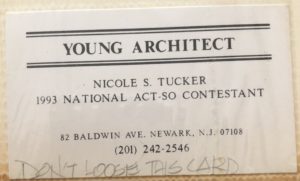
ACT-SO, a major program of the National Association for the Advancement of Colored People (NAACP), is an acronym that stands for Afro-Academic, Cultural, Technological and Scientific Olympics. ACT-SO, often referred to as the “Olympics of the Mind”, seeks to promote the following among high school students:
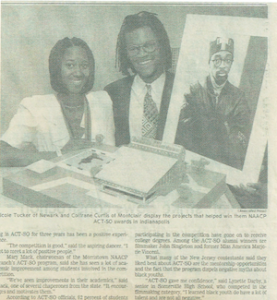
Fortunately, Mr. Brown’s Architecture firm was a short bus ride down Clinton Avenue. I think I went there either 1-3 times a week after school. Bill had an idea to get started with and I think we ultimately decided on a community center, which I named The Uhuru Community Center. Uhuru means freedom in Swahili. We discussed the purpose of the building, how it would be used, and having spaces that accommodated the potential activities. One space included a large gathering area for events that had rounded walls and a patio off of it where events could extend out to. Also, a major focus of the design was a long center hallway which had skylights extending throughout to let light in. I think this was especially meaningful as I remember a new school being built at that time near me that had no, and I mean no, windows.
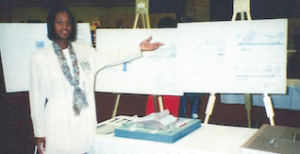
The ACT-SO competition required drawings of your design, a model, a paper, and a verbal presentation. I remember drawing the design and printing it on a machine at Mr. Brown’s office. I think I drew and reprinted at least five times. Under Bill’s mentorship, I placed first at the state level and nationally. https://www.actsonewjersey.org/nj-national-winners/
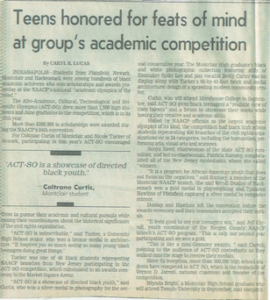
Ultimately, I decided to pursue Mechanically Engineering and now Applied Statistics. However, my time with Mr. Brown started me down a road of what I think of as conscious design that has been applicable in several areas of my career.
According to Bill, “Mentorship to others, in particular our younger generation, who may lack the resources or who have never been exposed to consider Architecture as their chosen profession, continues to inspire me and leaves an indelible mark in my life because others from the ‘village’ have invested in me encouraged, in me and I want to pay it forward to the next generation. When we mentor and speak, our words and deeds are like seeds of a sower. Some seeds will fall on the path and be eaten by the birds immediately, some seeds will fall on rocky terrain and be exposed and eaten by the birds too, some seeds will fall on the thorny bushes never taking root and will wither and die but other seeds will fall on the good soil, take root and prosper, something we can’t mathematically measure or quantify or necessarily see but having the faith that a new generation of Architects will emerge! We all must do our part in promoting the profession! It has been a lifetime of giving back to the community. The essence of my life is a “Quiet Strength” in sharing the good news of the Architecture profession and I will always ‘Let the Works I Have Done Speak For Me.’ ”
The American Institute of Architects has elevated Bill for his contributions in Object Three: Led the Institute, or a related organization.”To coordinate the building industry, and the profession of architecture.”
Fellowship in this object is granted to architects who have actively, efficiently, and cooperatively led the Institute or a related professional organization over a sustained period of time and have gained widespread recognition for the results of their work.
Bill is widely known and respected for his robust yet gentle leadership. He is celebrated for his generosity. Bill’s mark on the profession will be felt for many generations to come as he has planted seeds far and wide and the roots are taking hold, strong and sure. Bill, AIA New Jersey congratulates you wholeheartedly on your elevation to Fellowship of the American Institute of Architects.
Architects are creative professionals, educated, trained, and experienced in the art and science of building design, and licensed to practice architecture. Their designs respond to client needs, wants and vision, protect public safety, provide economic value, are innovative, inspire and contribute positively to the community and the environment. Founded in 1857, the American Institute of Architects (AIA) consistently works to create more valuable, healthy, secure, and sustainable buildings, neighborhoods, and communities. Through a dynamic network of more than 250 chapters and more than 95,000 member architects and design professionals, the AIA advocates for public policies that promote economic vitality and public wellbeing. Members adhere to a code of ethics and conduct to ensure the highest professional standards. The AIA provides members with tools and resources to assist them in their careers and business as well as engaging civic and government leaders and the public to find solutions to pressing issues facing our communities, institutions, nation, and world. The organization’s local chapter, AIA New Jersey, has served as the voice of the architectural profession in the Garden State since 1900. Based in Trenton, AIA New Jersey has over 2,000 members across six sections. For more information, please visit http://www.aia-nj.org
###
By Stacey Ruhle Kliesch, AIA, AIA NJ Advocacy Consultant | Posted in AIA Newark and Suburban, Diversity, EquityInArchitecture, Members & the Community | Tagged: #ACTSO, #AIAFellowship, #AIANewarkandSuburban, #Belonging, #diversity, #EDI, #emergingprofessionals, #equity, #EquityInArchitecture, #Inclusion, #IWD2021, #JEDI, #Mentorship, #Newark, #NicoleTucker, #rutgers, #STEAM, #UPENN, #WIA, #WilliamMBrownIIIAIA, #WilliamMBrownIIIFAIA, #WilliamMBrownIIIFAIANOMA, #WomensHistoryMonth, NAACP, NJNOMA, NOMA | Comments (0)
Architects are creative professionals, educated, trained, and experienced in the art and science of building design, and licensed to practice architecture. Their designs respond to client needs, wants and vision, protect public safety, provide economic value, are innovative, inspire and contribute positively to the community and the environment.

414 Riverview Plaza, Trenton, NJ 08611
(609) 393-5690
info@aia-nj.org